Forsythia: [Planting, Care, Irrigation, Substrate, Pests and Diseases]

Important points when sowing Forsythia
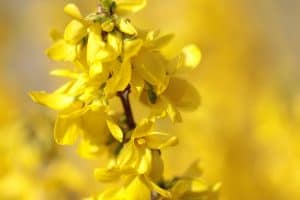 When? It is preferably grown in spring and late summer to early fall.
When? It is preferably grown in spring and late summer to early fall.- Where? Warm weather environments, in outdoor space. Gardens and parks are ideal.
- How do we prepare the land? The soil must contain nutrients and be very permeable so that the plant does not get sick. The ideal pH is slightly acidic, between 5 or 6.
- How do we sow? It is cultivated individually by seed and by bulbs aligned on the margins of the garden, in spring, and in groups, in the formation of hedges.
- How do we pay? In autumn, the land should be fertilized with a good organic product such as manure,earthworm humus and guano.
- When do they bloom? In spring, it blooms profusely.
- Ideal temperature? The ideal temperature for this shrub ranges from 18ºC to 22ºC. Supports low temperatures.
- How do we water? In summer, watering must be very abundant. Three to four times a week is adequate. The rest of the year is spaced every 4 or 5 days.
- What diseases and pests does it have? Its leaves and flowers can suffer from fungi such as Alternaria, Phyllocticta or Sclerotinia sclerotiorum. Field bugs and aphids can attack it, but it is not frequent.
What is Forsythia?
The Forsythia, Forsitia or Chinese Bell is a genus of deciduous shrubby plant, native to the Asian continent that has at least one variety from Southeast Europe.
There are at least 11 official shrubby species that reach around 1 to 3 meters in maximum height, characterized by a remarkable early flowering, in early spring.
The flowers of this ornamental plant are very yellow and have a prominent lobed corolla, with petals that only grow at the base.
They are very popular in urban gardens and parks, especially the species Forsythia x intermedia and Forsythia suspensa.
forsythia varieties
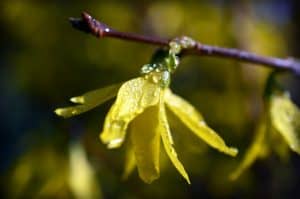 Forsythia x intermedia is rather small, but its flowers are extremely colourful. In contrast, Forsythia suspensa is a large, large-foliaged, larger-than-average shrub that lives in eastern and central China.
Forsythia x intermedia is rather small, but its flowers are extremely colourful. In contrast, Forsythia suspensa is a large, large-foliaged, larger-than-average shrub that lives in eastern and central China.
This plant has been used since time immemorial for medicinal purposes. It is considered one of the 50 fundamental herbs of traditional Chinese medicine.
In autumn its fruits are collected to treat inflammatory and infectious processes.
Where should we plant forsythia?
This plant has been expanding throughout the world as an ornamental crop, given its ideal appearance to adorn natural spaces such as gardens and public parks with great showiness.
Forsythia flowering time
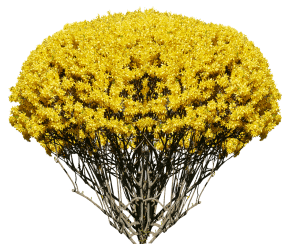 During its flowering period it dresses completely in yellow, thanks to its famous flowers, called Chinese Bells (4 lobes) that hang from elongated flexible branches that can reach up to 3 meters.
During its flowering period it dresses completely in yellow, thanks to its famous flowers, called Chinese Bells (4 lobes) that hang from elongated flexible branches that can reach up to 3 meters.
They are full of very green and lanceolate leaves, which are not easily distinguished, given the unusual yellowish invasion that covers the entire plant.
It does not require more natural conditions. It prefers a lot of sunlight, because that way it grows and flowers quickly.
It can also be grown in large pots and is so versatile that it has even been incorporated into Bonsai – type compositions.
When do we grow forsythia?
It is cultivated individually or in small groups of specimens aligned on the margins, in the formation of hedges and by bulbs or seeds in spring.
Its multiplication is usually done at the end of the summer or the beginning of the autumn, with the help of the semi-woody cuttings technique and the seedlings must also be sown in the autumn.
How do we prepare the land?
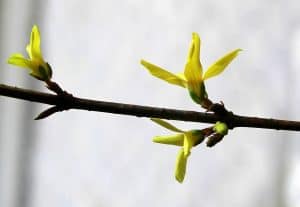 It needs to live fully in well-drained, nourished, absolutely permeable soils, so it is advisable to prevent water from stagnating and causing puddles.
It needs to live fully in well-drained, nourished, absolutely permeable soils, so it is advisable to prevent water from stagnating and causing puddles.
A slightly acidic pH will also be convenient, which ranges between 5 to 6 is the most recommended.
potted substrate
If you decide to have it in a pot, you need to purchase a growing medium for acidophilic plants.
Forsythia fertilization techniques
in garden land
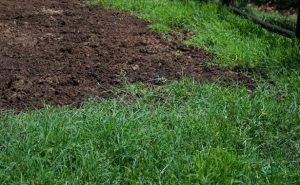 Another task that must be fulfilled with discipline is to fertilize the plant from the beginning of spring until the end of summer.
Another task that must be fulfilled with discipline is to fertilize the plant from the beginning of spring until the end of summer.
They are great fertilizers of organic origin such as manure, earthworm humus or guano which can be applied to the ground once a month, as long as the plant is in our garden.
A mineral fertilizer will also be a valid option for the summer, applying it every 15 to 20 days. Some apply it from June to October of each year.
in potting soil
But if it is a matter of fertilizing in a pot, the technique changes a bit, because liquid fertilizers for acidophilic plants that are obtained in nurseries and garden stores must be applied.
How to plant forsythia step by step?
- Cultivating and multiplying this wonderful gift of nature is not very complicated. It is enough to follow these simple steps so that you obtain a hyper-flowered specimen in a short period of time.
- Obtain a cutting from a tender stem, very healthy and strong at the same time. It is the best way to plant it.
- Apply rooting hormones to the base of the shoot, either in a powdered presentation or homemade, such as coffee, cinnamon, lentils (in previously prepared and strained juices)
- It should be planted in a pot that is approximately 10 centimeters in diameter, at the bottom of which a moistened vermiculite mantle will be placed so that the water drains well.
- Immediately afterwards, the shoot is buried with great care, without many leaves so that it does not lose strength in the rooting process and at a depth of about 2 to 3 centimeters. It should be placed in a place where there is good sunlight, but in semi-shade.
- The pot should be watered religiously every 4-5 times a week to ensure the substrate is always moist, not soggy.
- A month later, a young plant capable of abundant flowering in a short time will be obtained.
What care do you need?
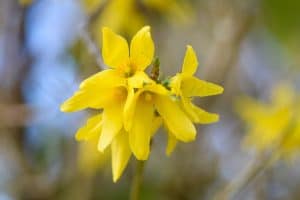 Following the following tips carefully will allow your Chinese Bell to last a long time in your garden or terrace.
Following the following tips carefully will allow your Chinese Bell to last a long time in your garden or terrace.
- It is a very resistant plant, because it withstands solar radiation for many hours and also withstands low night temperatures, that is, during the winter it can survive without major problems.
- But if the summer is very hot, with temperatures exceeding 30ºC, it should be taken to a semi-shaded place to prevent it from dehydrating due to the intense solar radiation.
- Another recommendation for the summer is that it should be watered more frequently, between 3 to 4 times a week. But the rest of the year will not be like that. Just one watering every 4 or 5 days will be more than enough for her.
- It is preferable to use rainwater or acidified water for irrigation. The lime in the treated water can cause irreparable damage.
- At the end of flowering, it is necessary to remove or cut any dry branches. Otherwise, its flowering cycle for the following season would be altered, so pruning is mandatory. You have to remove branches that did not flower and tips with dry flowers.
- Although it is not a plant that is a frequent victim of pests and diseases, for prevention it can be sprayed with polyvalent products in the winter, when it is bare of leaves.
What pests and diseases does it have?
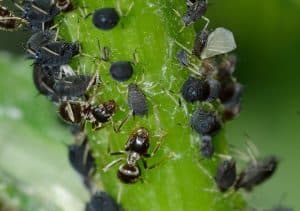 Chinese Bellflower can be attacked by diseases on its leaves. If the leaves are covered with spots, moles or specks, ranging from brownish, brown to slate gray or black, then an Alternaria or Phyllocticta type fungus has occurred.
Chinese Bellflower can be attacked by diseases on its leaves. If the leaves are covered with spots, moles or specks, ranging from brownish, brown to slate gray or black, then an Alternaria or Phyllocticta type fungus has occurred.
The remedy to be applied is resolved by applying zineb, mancozeb or maneb, effective dictiocarbamates.
There is another type of fungus called Sclerotinia sclerotiorum, which ruins the flowers and then goes on to reach the branches. It can also be combated with fungicides that a specialist must apply to the base of the plant, because the fungus is in the ground.
In both cases, all destroyed leaves and flowers must be carefully removed and burned.
They also suffer from aphid attacks, but this happens frequently. They produce what is called a virus. It is identified by the leaves turning white or yellowish.
Other pests are Root Galls or Nematodes (Meloidogyne) and Field Bugs, guilty of causing circular spots on the leaves that they bite.


![Photo of Plant Cell: [Definition, Characteristics, Types and Importance]](https://www.complete-gardening.com/wp-content/uploads/2022/08/plant-cell-definition-characteristics-types-and-importance-390x220.jpg)
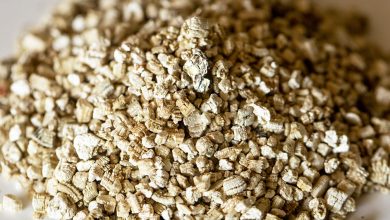
![Photo of How to Plant a Mimosa Tree: [Complete Guide + Step by Step]](https://www.complete-gardening.com/wp-content/uploads/2021/06/sembrar-mimosa-paso-a-paso-390x220.jpg)